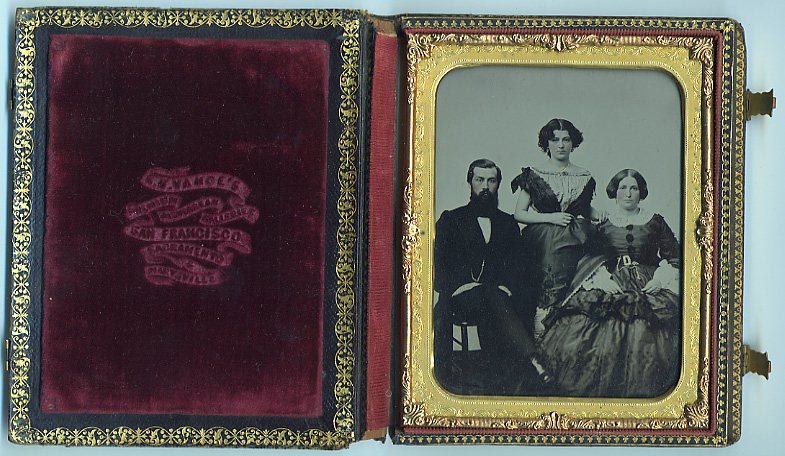
The magnificent Ambrotype at actual size, showing the pad with
the desirable Vance imprint.
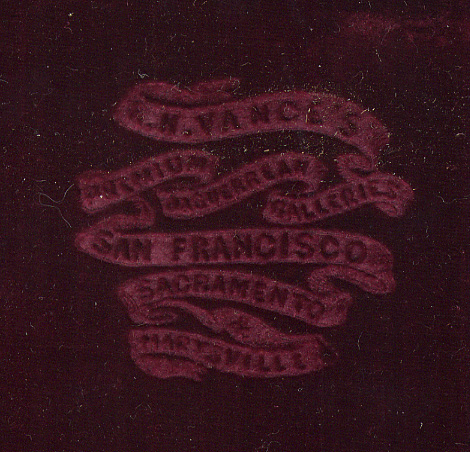
Vance imprint at 250%. Who was Robert H. Vance? Simply the best-known
Gold Rush photographer and arguably the most desirable.
Vance was also responsible for one of the great lost treasures of America.
Briefly, the story is this: In 1850 and 1851, during the height of the
California Gold Rush, Vance traveled throughout Northern California, taking
some 300 daguerreotypes of the cities and town, mining and miners, probably
Indians and Indian villages and more. The dags he took were whole plates,
meaning twice the size of the ambro shown here, and comparable to the 200%
enlargement pictured below. This was the largest size available at the time.
Each dag was mounted in a custom rosewood frame, and each had outstanding
display value. Vance took them to New York for exhibition, but they were
a financial loss. He sold the lot and they went through a couple of hands,
eventually ending up with famed St. Louis photographer John H. Fitzgibbon.
Fitz left the country during the Civil War and the dags were never seen
again.
Now, other than their incredible historical value, what might be their
monetary value today, were all 300 to be found in perfect condition? If
we figure each dag as having a current value of, say, $100,000, the lot
would be worth about $30,000,000 (thirty million dollars). That I believe
would be a reasonable value. And it's very likely some would be worth $250,000
each.
But if they do turn up as one lot - and it's not all that farfetched that
they will someday - I hope that someone will publish a high-quality book
of photographs of the bunch that the average collector and historian could
afford.
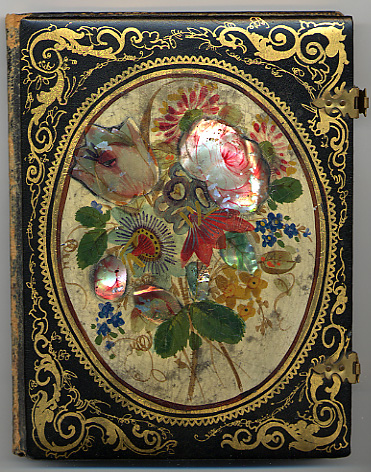
Stunning Mother of Pearl front cover at actual size.
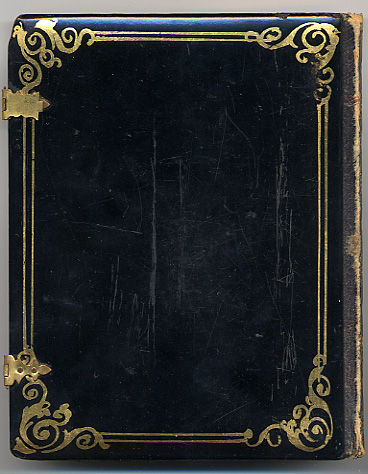
The back cover of this wonderful case.
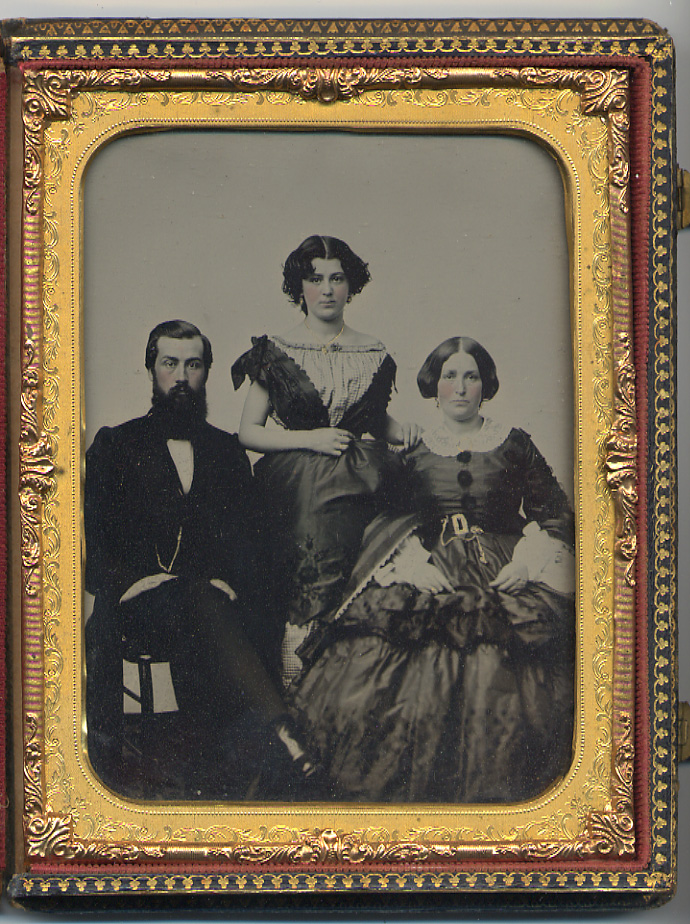
Ambro at 200% (twice actual size). What's wrong with it? Well, ambrotypes
inherently do a poor job of copying dark colors. Notice how the father's
clothing blends into one shade and practically disappears, while the mother's
dress shows considerable detail, as does the girl's top. A shame the dresses
weren't colored.

The Ambro at 200%, but enhanced (contrast added).
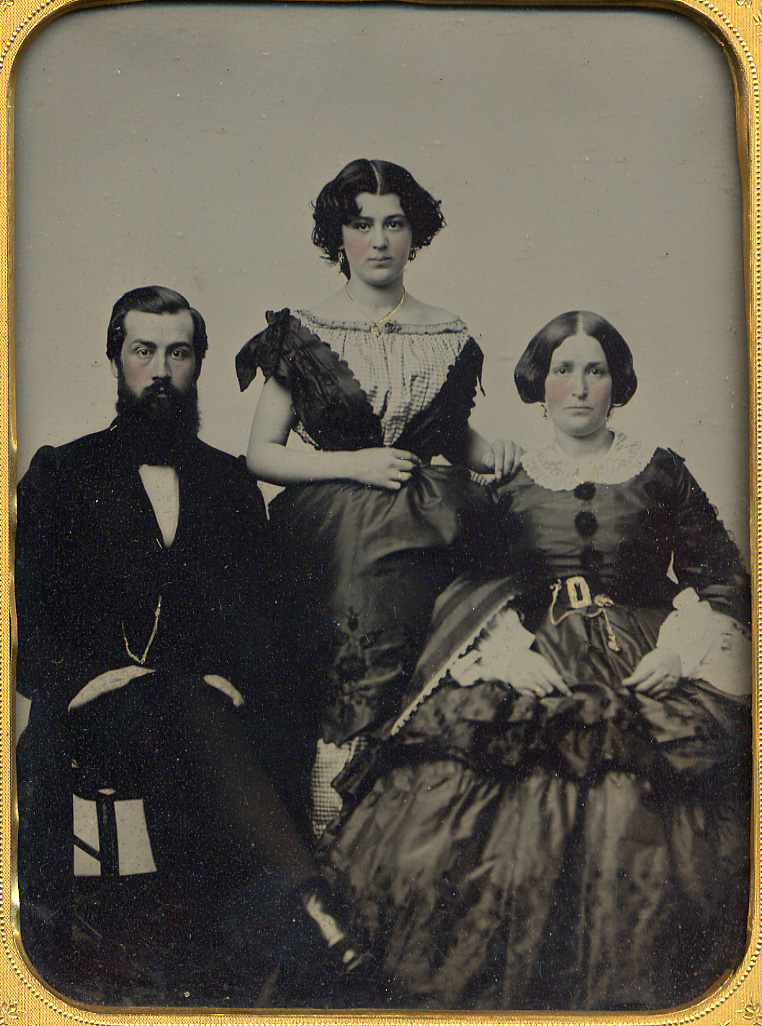
The image at 300%, enhanced. From the clothing I would date this at about
1858.
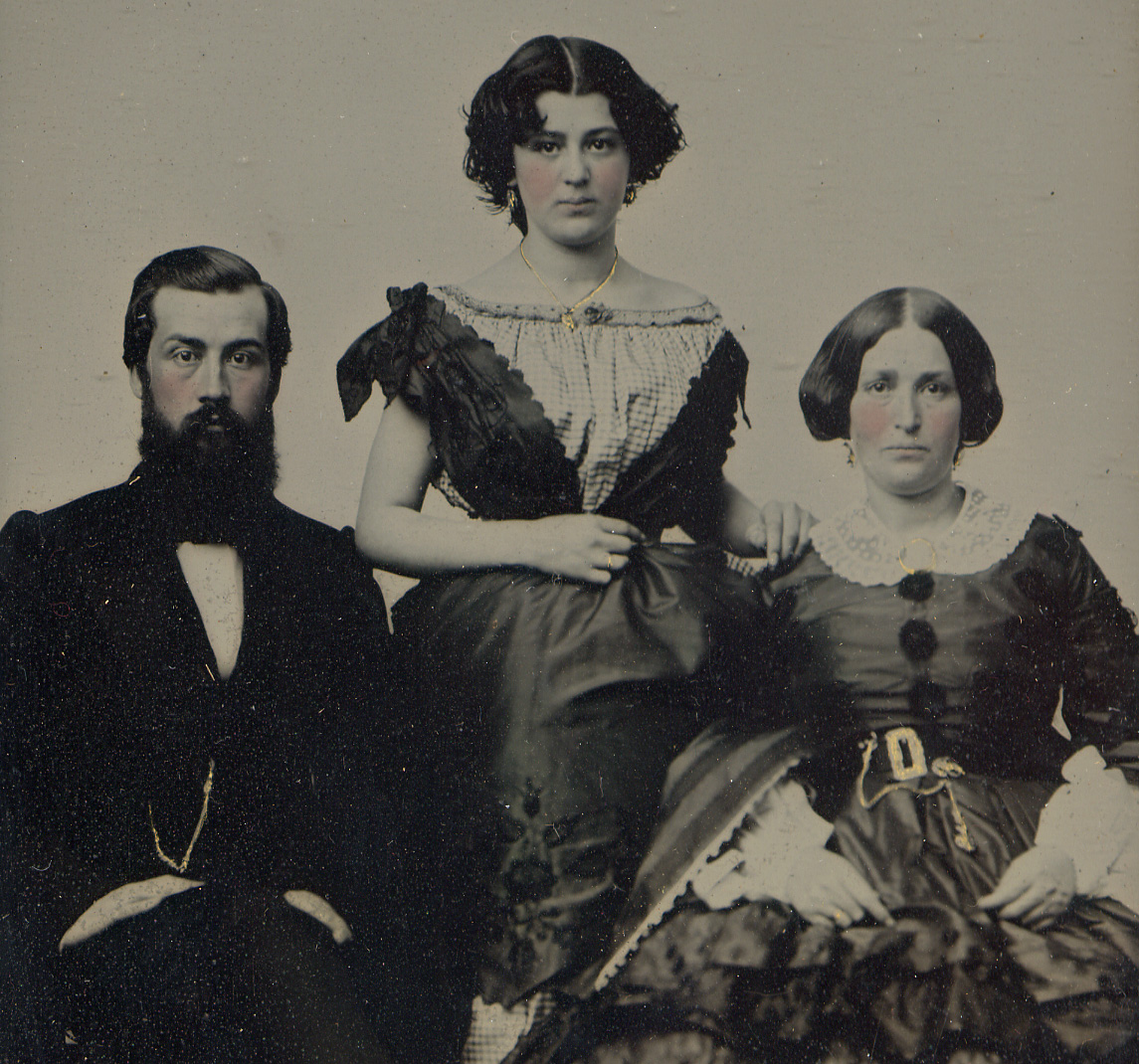
The image at 500% and enhanced. It can well be imagined that this fine family
photograph was one of the prized possessions of the girl throughout her
life. Perhaps it was passed along to her descendants, but regretfully somewhere
along the line it got sold off and the people's identities were lost. What
a pity. Nevertheless, this was obviously a well-to-do family, probably in
San Francisco or the vicinity, and it's very possible that someone who sees
this photo on the Internet will know who they are and will contact me. I
certainly hope so.








